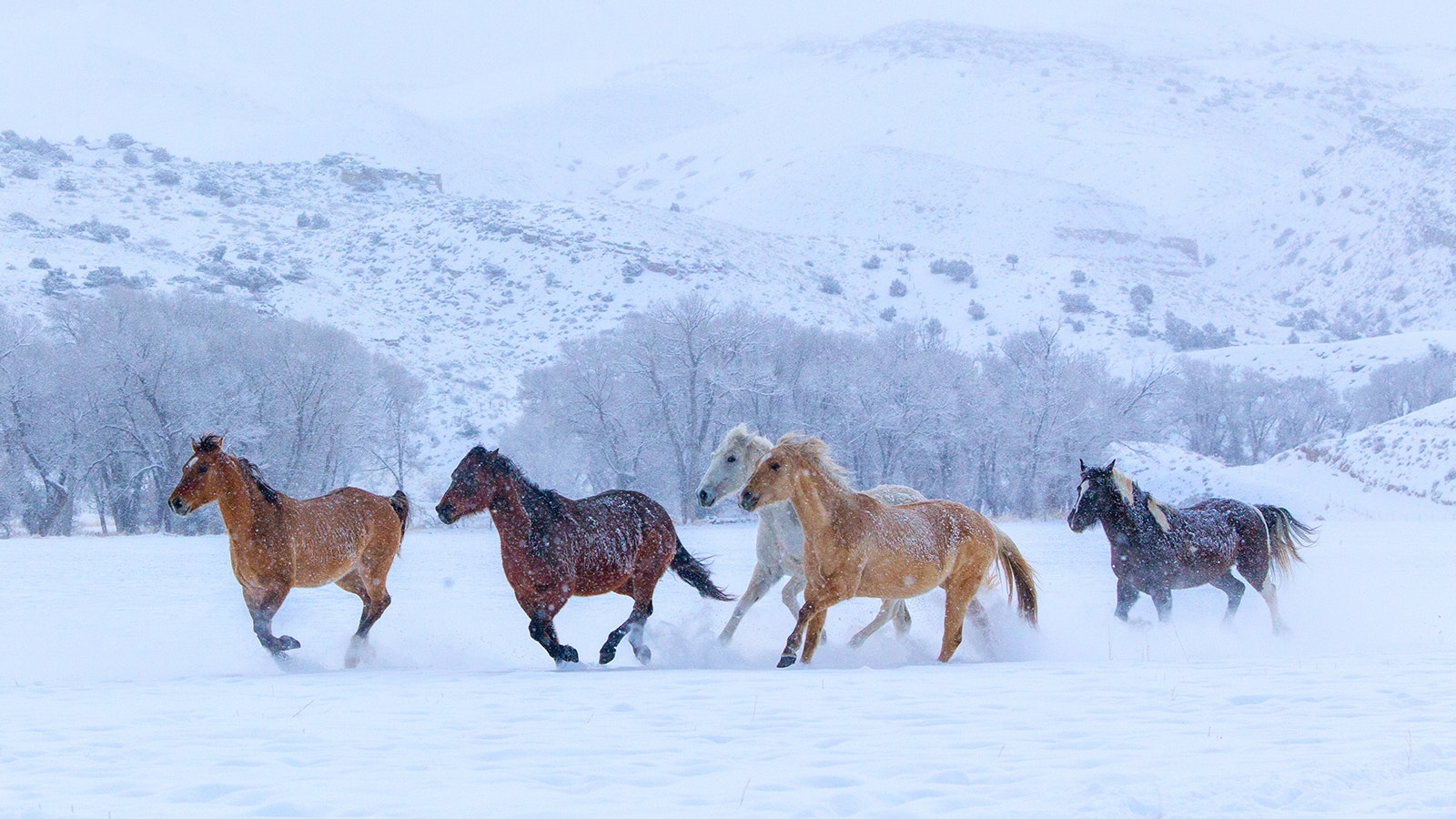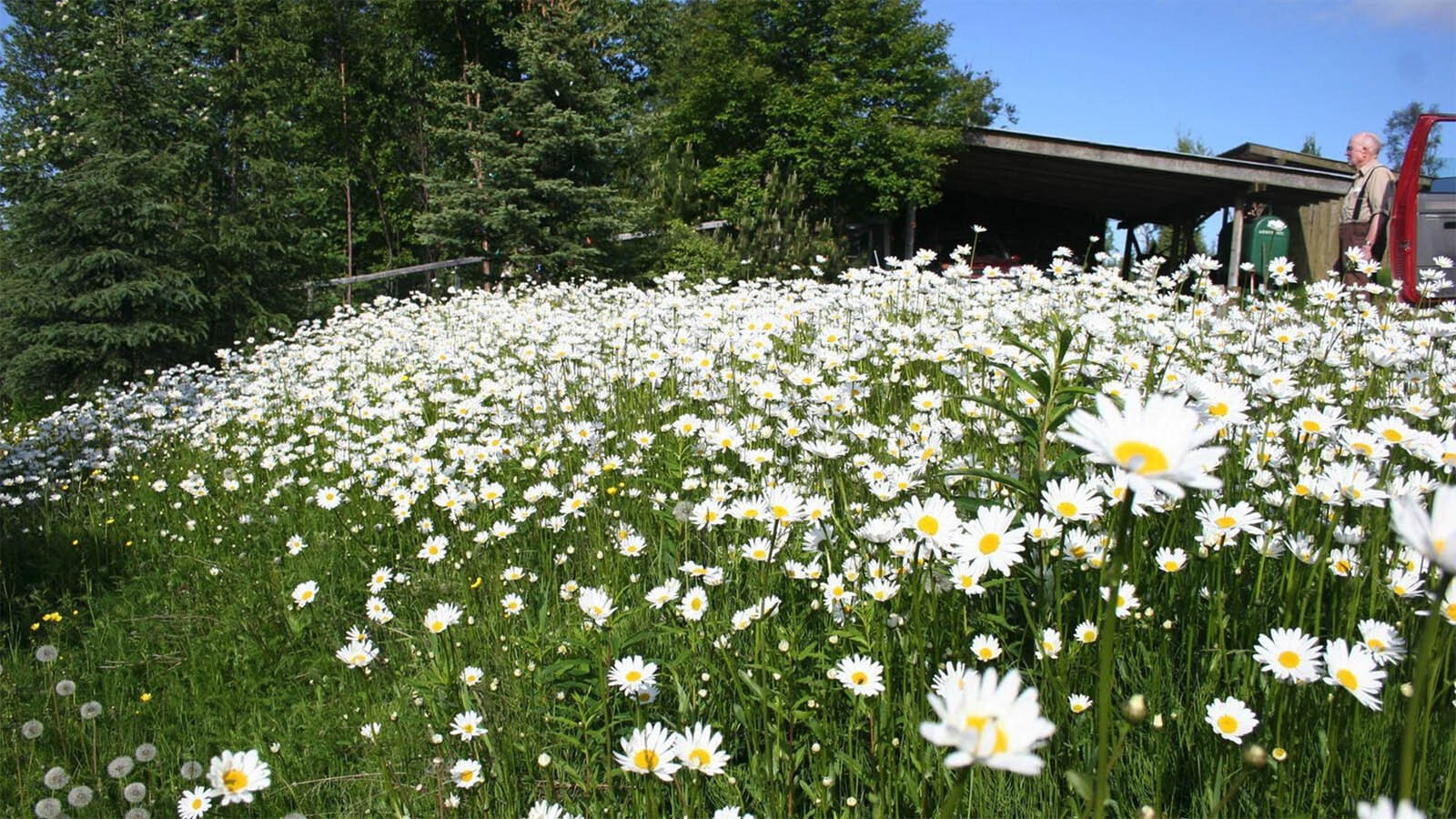While some Wyoming wildlife species are having their most horrible winter in recent memory – with massive die-offs among antelope and deer – the fate of the state’s wild mustangs remains uncertain, some experts said.
The best bet for mustangs to survive what was an epic winter on their range across central and southcentral Wyoming is to “move to ridges where the wind has blown off the snow and find food,” wild horse advocate Carol Walker of Longmont, Colorado, told Cowboy State Daily.
However, this year has seen unprecedented snowfall in much of the low country, including the Red Desert, where mustangs share winter range with antelope, deer and elk. That’s left those wind-blown ridges stripped bare of food.
In a recent podcast, Walker described a recent flight over the Red Desert as “flying over a sea of snow.”
Carbon County Commissioner John Espy, who ranches in mustang territory, told Cowboy State Daily this week that he’s yet to see any winterkilled mustangs, “but I have seen some (dead) elk.”
As he and others have pointed out, a winter harsh enough to kill elk is unusual.
Still Largely Unknown
The Wild Horse and Burro Act of 1971 put mustangs across the West under the jurisdiction of the Department of the Interior, with the Bureau of Land Management as the agency directly in charge of the animals.
In Wyoming, the BLM oversees numerous herd management areas (HMAs) across the Red Desert and other mustang range.
So far, deep, hard-crusted snow has kept field personnel from getting a clear idea of how the mustangs are doing, or how many this winter may have killed, BLM spokeswoman Azure Hall told Cowboy State Daily.
“Unfortunately, we won’t have much data until the field office staff is able to get out to the HMAs to complete counts,” she said. “Once there is snowmelt that makes the roads and HMAs accessible, we will have a better idea of how the winter impacted horse populations.”
Just Say ‘No’ To Roundups?
The mustangs have been the center of controversy in Wyoming.
While some may grieve a large winterkill of the animals, others might welcome a die-off of mustangs, which have been described as an invasive species in Wyoming.
Hunting and big game advocates have argued that the mustangs aren’t truly wild, but instead are a feral invasive species. Mustangs have been blamed for hogging forage and water away from mule deer – which were already struggling even before this winter hit.
However, the American Wild Horse Campaign, a mustang advocacy group, contends that the horses have been here long enough and are adapted well enough to the rangeland to be regarded as wildlife. Moreover, the group claims, mustangs are scapegoated for habitat damage that is actually caused by cattle and sheep.
The wild horse campaign has been watching the situation in Wyoming with concern, spokeswoman Grace Kuhn told Cowboy State Daily.
“Harsh winter conditions have heavily impacted wildlife and there is no doubt that there will be significant loss of wild horses as well,” she said.
Like the BLM, the wild horse campaign doesn’t have any estimates about how many mustangs have died, she said.
The BLM regularly culls mustang herds by rounding some of the horses up and putting them into holding pens – where some are available for adoption.
Given the severity of the winter, the BLM shouldn’t do that this spring, Kuhn said.
“No removals should take place before such a determination (of the number of mustang winter deaths) is made,” she said. “It would be difficult to believe the extreme weather conditions — the worst in four decades — would not have exacted the same toll on wild horses that has occurred in other wildlife species.”

Darned Hardy Critters
In some areas, particularly around Baggs, it’s feared that 50% to 80% of antelope herds could die. And there’s also concern that mule deer deaths could run as high as 50% in some herds.
However, mustangs have size and tenacity going for them and likely won’t suffer such large death tolls, Walker said. They can break through snow to get to food better than deer and antelope, and can survive on little more than brush.
“The horses also are in small family bands so they can move around better and need less forage than say a huge herd of antelope all together,” Walker said. “They have very thick winter coats.”
During recent “town hall” meetings regarding wildlife winterkill, Wyoming Game and Fish Department Director Brian Nesvik and others said they’re worried that, as harsh conditions continued into Marsh and April, many fawn deer and antelope could die.
The mustangs might have a similar drop in the numbers of young, because mares struggling to survive the winter might not give birth at all, Walker said.
“Likely many of the mares have either absorbed or aborted their foals because there just isn’t enough to feed them and it is very likely that there will be a very small amount of foals born this year,” she said.





